Salt is a common deicer that's used during bad weather. It can melt the snow on your garden walkways or driveway. One way to disperse the salt effectively is by using a spreader. Due to low temperatures, the salt may freeze and get trapped in the spreader. We did research on how to remove frozen salt from a spreader, so keep reading to learn more.
If moisture causes the salt to freeze inside the spreader, you can try getting it out with a pressure washer. You can also try using a shovel to remove the salt. After every use, you should clean any salt residue off the spreader components, such as the belt, augers, and other movable parts.
Make sure that you put thawed, dry salt in your spreader. Frozen salt can clog the spreader and damage its internal mechanisms. Keeping the spreader free from frozen salt keeps it in good condition. For help with this issue, continue reading.
How To Remove Frozen Salt From A Spreader
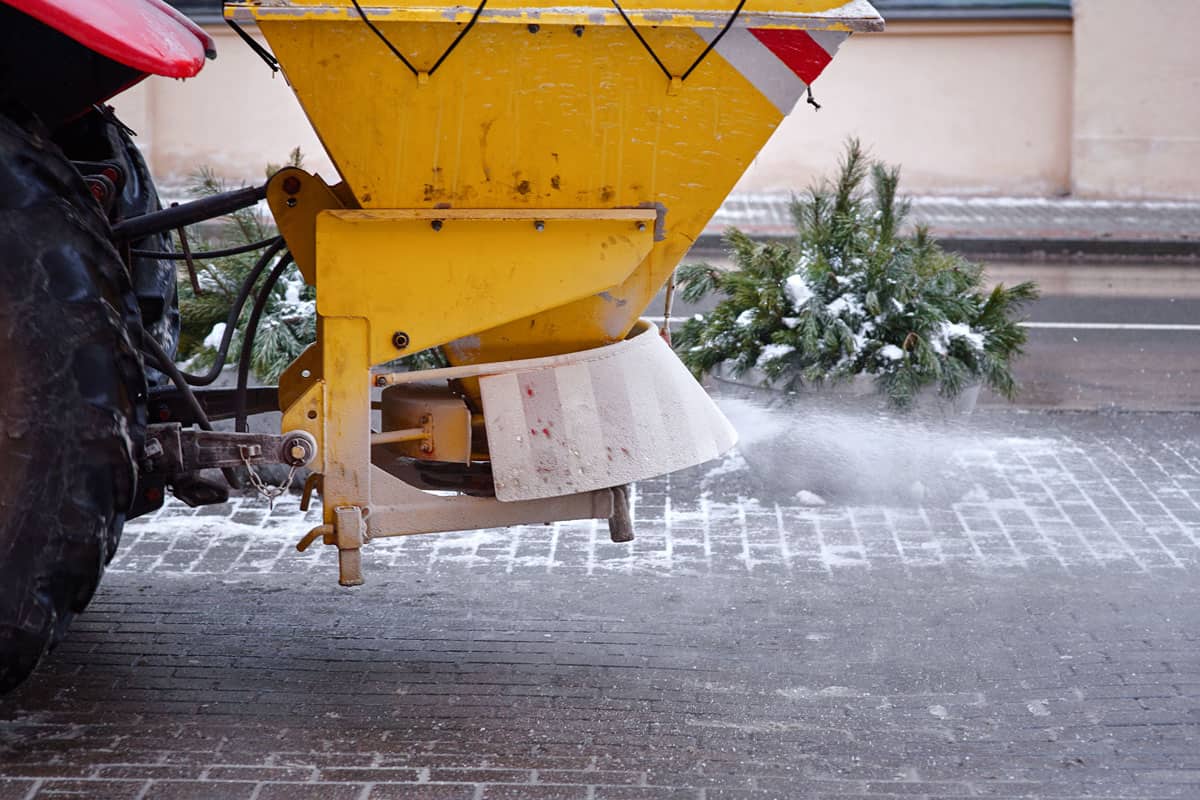
Snow covering your garden paths can be bothersome. A deicer like salt can come in handy for dealing with ice and snow. Some homeowners use a shovel to apply a deicer like salt on paths and driveways. With the use of a spreader, distributing the deicer is faster, and you can get rid of the ice with ease.
A salt spreader uses salt to melt ice and snow. Salt can reduce the freezing point of water. As the temperatures drop, the salt makes freezing difficult for water.
Check out this rock salt on Amazon.
When you spread salt in one area, it can create a puddle. The runoff can spread to nearby snowy paths. The amount of ice melted and the speed of melting depends on the salt you add. In general, you should use four pounds of salt per 1,000 square feet.
However, salt has limits. When the temperature falls below 15 degrees Fahrenheit, salt will not melt ice or snow. Using more salt does not mean it can melt more snow.
Moreover, salt residue can remain in the spreader after using it. The salt can freeze and cause damage. Moisture retained in salt can freeze and clog the spreader. You should remove the salt before you spread it again.
Removing Frozen Salt From A Spreader
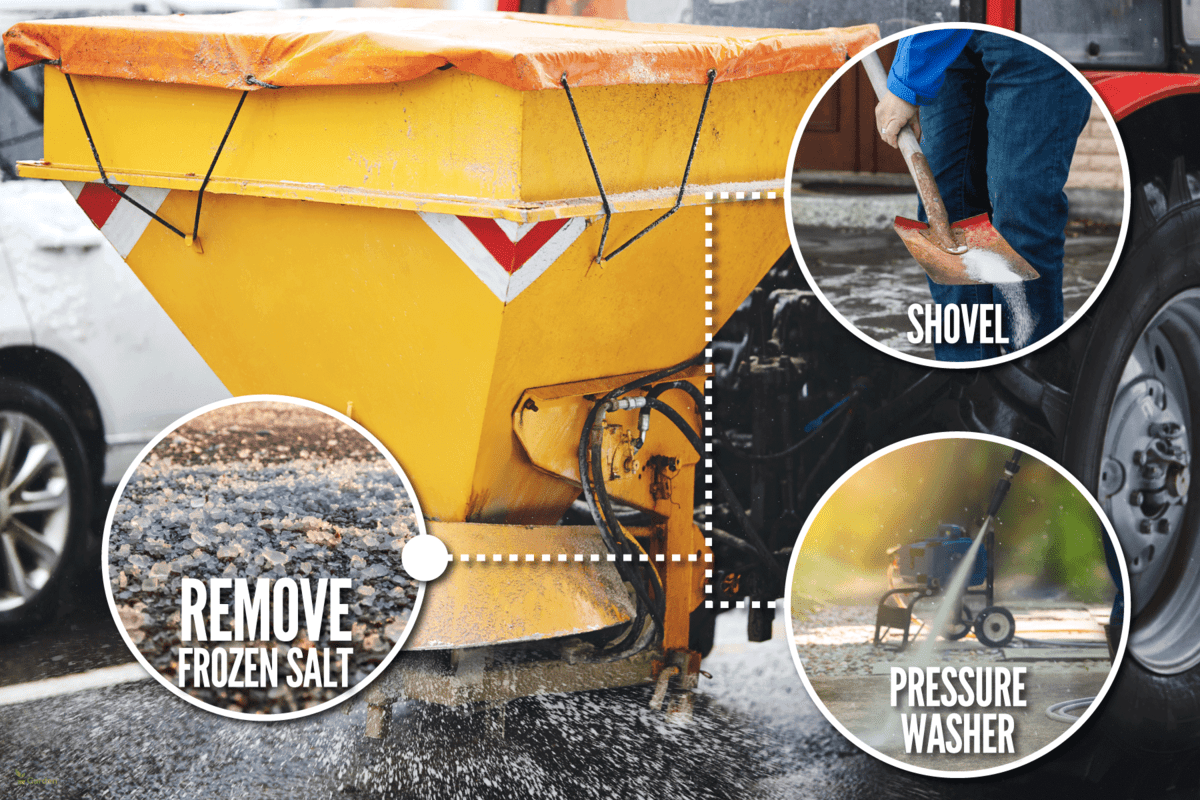
To remove salt that has frozen inside a spreader, you can try using a shovel to remove it. You can also clean it out with a pressure washer.
Simply use water with the pressure washer. If you want your spreader to be totally clean, you can use a cleaning solution (with soap or other solvents).
Select a cleaning solution that is suitable for the spreader material. Steel spreaders can rust, while polyethylene types do not corrode. You should not use alkaline or abrasive cleaners on polyethylene.
You should not leave any trace of salt in the spreader. The residues can freeze and clog the spreader. It's a good idea to grease the movable parts of the spreader after cleaning. In that way, you can keep the machine in good condition.
How To Keep Salt From Freezing In The Spreader
Here are some tips for preventing salt from freezing in the spreader.
- Store your salt in a waterproof container. Keep moisture away by placing salt stockpiles on waterproof material and storing them away from melting ice runoffs.
- Use the salt right away. Do not leave it inside the spreader for an extended period of time. Plan ahead on how much salt to use for melting snow.
- Make sure that you use coarse rock salt for the spreader.
- Choose the suitable spreader type if you use rock salt. Your choice depends on snow thickness and where you attach your spreader.
- Clean the spreader after each use.
You can refer to the product manual of your spreader for more detailed information on how to deal with frozen salt issues.
Should You Break Up Rock Salt Before Using It In A Spreader?
You should break hardened rock salt before you load it into the spreader. Salt can harden and clump if you do not store it in a waterproof container. You should reduce any clumping in rock salt to avoid damaging your spreader.
To break down rock salt, try one of the following solutions. Make sure to wear protective eye and hand gear when breaking up the clumps.
- If the salt is in the bag, you can drop the bag repeatedly on concrete or a hard surface.
- You can try to dissolve the clumping with warm water. Use just enough water to break the salt into smaller pieces.
- Use a hammer or drill to break the salt apart.
After breaking up the salt clumps, you can load the salt into the spreader.
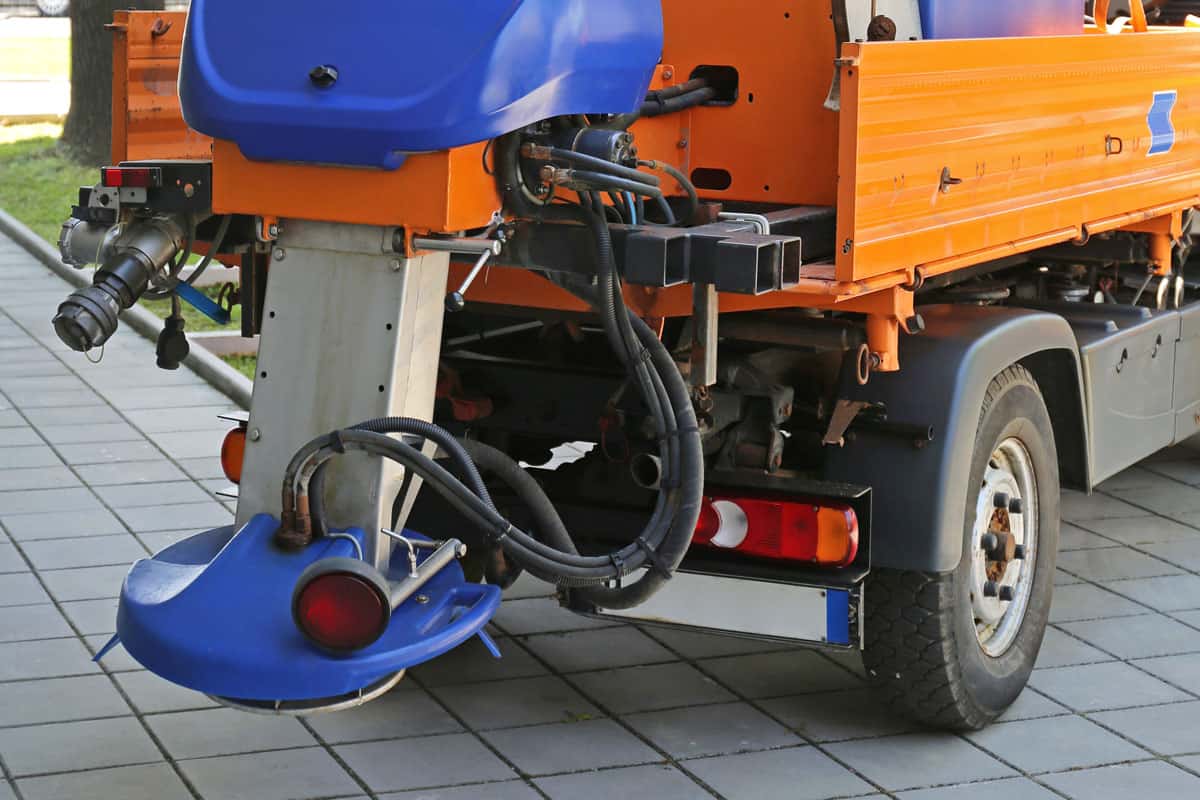
Should You Calibrate A Salt Spreader?
It's a good idea to calibrate your salt spreader before winter. Calibrating is a must so that you only use adequate salt for the snow you want to melt.
Modern spreaders have advanced systems to control the amount of salt to discharge on the roads. However, you may not fully benefit from the spreader without calibrating it.
With the right amount of salt, you won't leave residue inside the spreader. You can evenly distribute the salt in the target areas and minimize the environmental impact of salt on roads and pathways. Using the right amount of salt can also help you save money.
To properly calibrate a salt spreader, you can refer to a calibration chart. There are different types of spreaders with varying calibration processes. You should check your spreader specifications before calibrating.
In general, you should take note of the number of auger revolutions and the weight of the salt discharged.
When To Calibrate The Spreader
Here are the best times to calibrate your spreader:
- Before the winter season starts
- First-time using a new spreader
- After maintenance on the spreader vehicle
- Following the replacement of controls, hydraulic fluids, and speed sensors
- When you change the product used in the spreader
If you are not confident about calibrating, you can ask for assistance from the spreader manufacturer or someone who is an expert in the field.
What To Do If Salt Won't Melt Snow
If you are trying to melt snow and ice in temperatures below 15° Fahrenheit, salt alone may not work. If you are experiencing some difficulty, you can spread sand over the snow to gain some traction.
Sand is abrasive to snow. Combining it with salt is effective for melting ice. Besides aiding in melting, the sand can also help in slick, slippery areas, making them less dangerous
Sand retains heat, but using it alone is not as effective as salt. You might need to apply sand a couple of times. Although less effective, and is more environmentally friendly than salt.
Make sure that the sand is dry so that it won't freeze in the spreader.
Should You Spread Salt Before Snowfall or After?
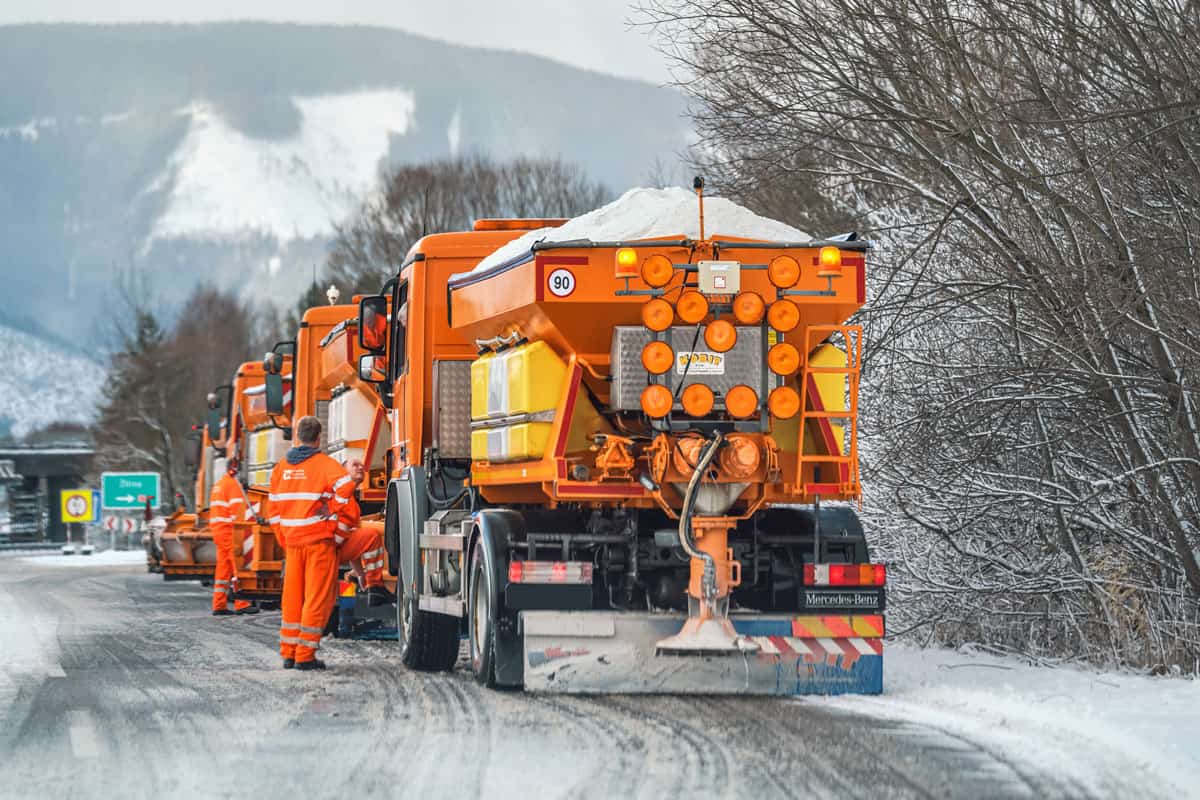
You should spread rock salt before the snow starts falling. The timing is crucial to effectively reduce the amount of snow in your garden pathways or driveway.
Rock salt can keep snow from sticking. The salt prevents ice formation and snow settling.
Putting salt on top of snow can create a mushy puddle underneath that may freeze. As a result, the snow will be hard to remove.
How To Maintain A Salt Spreader
To keep your salt spreader in good working condition, you should lubricate the moving components of the spreader, such as the belt, bearings, chains, and spinner.
Be sure to check the electrical wiring for damage, like corrosion. Salt can corrode the plugs, so should protect them with electrical grease. Have the spreader checked by an equipment repair center or expert when the winter season ends.
By following the maintenance tips, you can continue using the spreader with fewer worries.
In Summary
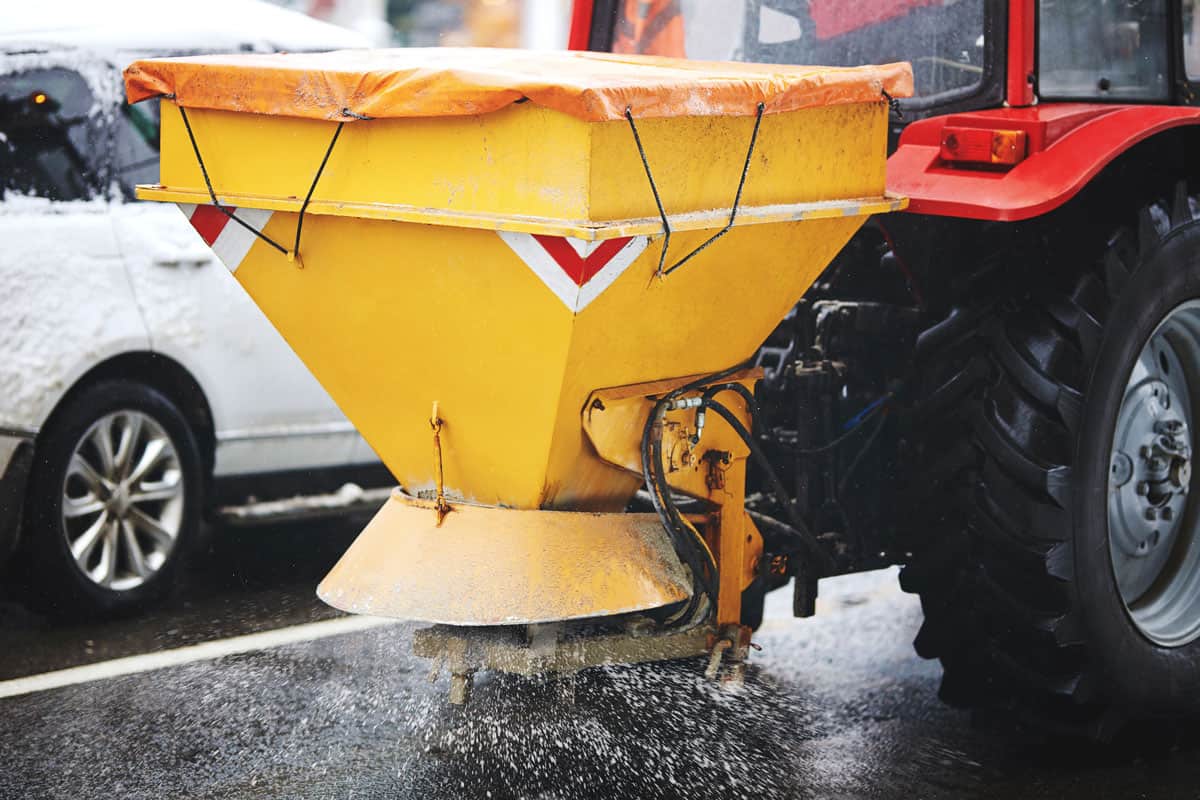
If salt freezes in your spreader, you can try removing it with a pressure washer. Simply use water or a suitable cleaning solution on the spreader. You can also try to remove it with a shovel.
You can avoid the problem of frozen salt by cleaning the spreader after each use. The formation of frozen salt can damage the interior components of the spreader. You can keep the moving parts working efficiently by greasing them after cleaning.
By keeping the spreader free from frozen salt, you can effectively deice the snow in your area.
Learn more about dealing with snow from these posts:

